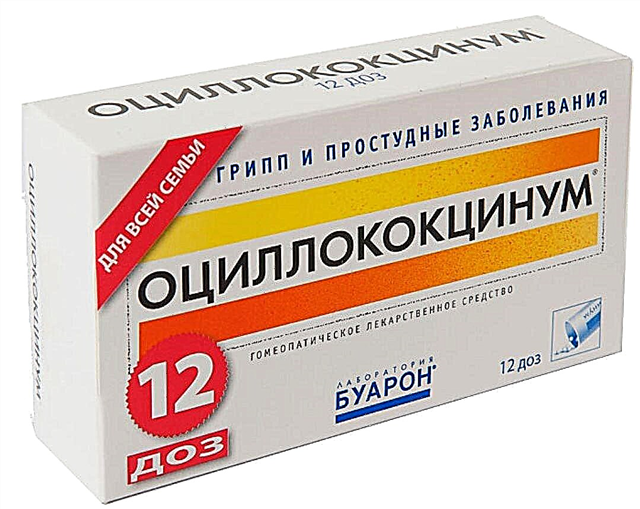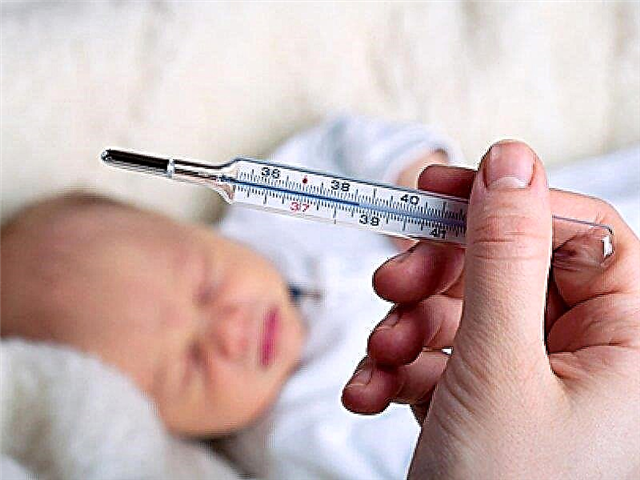
Leakage or early discharge of amniotic fluid is a serious complication of pregnancy. It threatens both the mother and the baby, and at the same time requires hospitalization, a special further approach to the management of pregnancy, and sometimes stimulation of labor or a caesarean section. That is why it is very important to learn how to distinguish water from other biological fluids. Modern test systems will help with this.

General information
The fetal bladder is a special space in which the baby spends all 9 months of her mother's pregnancy and goes through all stages of development. It is filled with amniotic fluid - the very first habitat of the baby, optimal for him until the moment of birth. The bladder is a sealed structure that reliably protects the fetus from any external influences. It consists of a two-layer shell.
The outer one is the chorion. The inner lining that secretes amniotic fluid is called the amnion. Waters are produced continuously, and every 3 hours their composition is completely renewed, which allows you to achieve a sterile environment inside the uterus. Waters nourish the baby, protect it, help maintain a constant temperature in the uterine cavity, soften shocks and shocks.
Timely discharge of water occurs at the peak of labor pains, when the cervix is almost completely open. In this case, the waters contribute to the further disclosure of the cervix and a faster and more correct biomechanism of childbirth - the passage of the baby through the birth canal. Less often, childbirth begins with the outpouring of water, and this is already considered a pathology.
However, complete discharge, if a rupture of the membranes occurs, it is not difficult to diagnose even at home - a lot of fluid, it is not associated with urination... Everything is more complicated with incomplete "depressurization" - lateral tears of the bubble. In this case, the water does not completely drain, but only leaks.
The problem is that an infection can get to the fetus through the broken membranes, and this can become a very dangerous event for him. To minimize the risks of intrauterine infection, it is necessary to diagnose a violation of the integrity of the bladder for at least a day, after this time the likelihood of infection increases significantly.


That is why special tests for the leakage of amniotic fluid have been created, designed to determine premature discharge, partial outpouring of amniotic fluid.
How test systems work
It is not always possible to guess about the leakage. Usually, it can theoretically indicate an increase in the amount of vaginal discharge. There are more of them after the woman spends some time in a horizontal position. And it is prudent, of course, to go to the doctor at the slightest suspicion of leakage, especially if the woman has a high risk of premature birth. However, it is also difficult for an experienced gynecologist to determine something precisely during a standard examination., especially since he himself routine inspection is strongly discouragedif a woman complains of a probable leakage of amniotic fluid, so as not to increase the risk of infection in the genital tract.
Ultrasound examination in this situation does not give accurate answers, but doing amniocentesis with the addition of indigo contrast dye to make sure that the woman and the baby are not in danger, not the most correct decision, associated with additional risks.


Therefore, tests, in fact, are the only more or less reliable way to find out if there is water leakage or not.
They are home rapid tests that can be bought at any pharmacy, and there are exclusively laboratory systems that are carried out in a maternity hospital or antenatal clinic.
Home tests, which can be ordinary strips or pads, work on the principle of litmus test, react to the alkaline environment of secretions... In a woman's vagina, the natural environment is always acidic, and its change to alkaline may indicate that the membranes are no longer airtight.

More sophisticated and expensive tests, as well as laboratory systems for detecting amniotic fluid in secretions are based on the identification of special substances that can not be found in semen, urine, or vaginal secretions. They are inherent only in the composition of the waters surrounding the fruit. It is an insulin-like growth factor and placental microglobulin-1.
It is those systems that can determine microglobulin that are considered more accurate. It is they who are made in the hospital with suspected water leakage. Among all the variety of tests that are offered to women in the pharmacy, only one and the only one capable of diagnosing microglobulin is Amnisure. The rest, including such well-known brands as Frautest and others, they are incapable of this and are limited only to the determination of the alkaline or acidic environment of secretions and the presence of an insulin-like growth factor.


Home test results are read quite simply, just like ovulation tests and pregnancy detection systems. It is only important to do everything according to the instructions, and, having received a positive test result, seek medical help without delay.
Types of tests
Consider what home tests are for self-diagnosis of amniotic fluid leakage.
Gaskets
When talking about test strips, women should understand that we are not talking about those narrow little strips that were dipped in the urine a few months ago to find out if a pregnancy has occurred or not. Amniotests of the simplest type are pads that need to be worn for some time so that the reagent can determine what is prevalent in the discharge. These tests are considered to be the most affordable and easiest to use. However, their accuracy is poor.


Frautest amnio
Outwardly, it is very similar to an ordinary thin panty liner. It is simply attached to the underwear in a simple, familiar way. The gasket has a yellowish stripe in the center, which is a matrix with an indicator. If the acidity of the vagina is normal, then the lining remains yellowish. If it is reduced due to the presence of amniotic fluid in the alkaline fluid, then the strip changes color to bluish-greenish - this is a positive result that requires urgent medical attention.
The instructions for using such a test are very simple: take out the pad, attach it to the laundry and remove it either as it fills or within 12 hours.
The disadvantages of this test are that the gasket can change the color even as a reaction to ammonia in the urine, and it is also not worthwhile to carry out diagnostics immediately after a woman takes a shower, uses vaginal suppositories. Disposable pads. Their cost starts from 350 rubles.


AL-sense
This pad test works in the same way as the Frautest described above. But you have to wait for the results, since the removed gasket should be placed in a special case-case and evaluate the verdict in half an hour. The test is also based on determining the decrease in the acidity of the vaginal environment.


The test can give false results if a woman has such ailments as vaginosis, colpitis, as well as in a number of other vaginal diseases. The cost is within 550 rubles.
"AmnioTest"
The set consists of single-use swabs. Each is impregnated with nitrazine yellow, and therefore this test is often referred to simply as the nitrazine test. Each tampon is packed in a separate bag, it is completely sterile, and therefore the expectant mother can safely allow it to be inserted into the vagina.
It is quite difficult to do it yourself - you should insert the stick either into the posterior fornix of the vagina, or touch the external os of the cervix. Usually such tests are used by gynecologists in antenatal clinics, although according to reviews some expectant mothers were able to do all this on their own.
After extraction, they wait about half a minute, and then compare the color test with the attached color palette, thereby decoding it.
Packs of 25 tampon sticks cost from 5.5 thousand rubles. An analogue test is the Amnicator, the use and characteristics of which are identical.


Important! Simple pad tests are practically ineffective if the sheaths ruptured more than 12 hours ago. The performance is significantly reduced.
Diagnostic systems are more complex devices based on the method of immunochromatography. But the systems are not based on determining the acidity of the vagina, as the simplest pads do. Their task is in the search for special protein substances, which were mentioned above.

AmniSure ROM Test
AmniSure is the most accurate test to date and is quite effective. The disadvantages include the high cost - from 2 thousand rubles. However, the result of such a test should not raise doubts either by your doctor or you.
The instructions for use are somewhat more complicated than those of simple test shims, but everything you need for testing is included in the kit. The test determines the presence of placental α1-microglobulin.
After carrying out standard hygiene procedures, a woman should unpack the package with a sterile swab. It is inserted into the vagina, holding by the middle of the handle, to a depth of 7 centimeters, but not less than 5 centimeters. After one and a half minutes, the tampon is carefully removed and placed in a bottle with a solvent - it is also included in the kit.
Once the tampon has been in the chemical liquid for a minute, discard it. Next, you will only use a solvent. Take the test strip out of the package and put it in the vial that previously contained the swab. The result is assessed within ten minutes. And it looks almost like in a pregnancy test - two clear red stripes appeared - there is leakage, if there is only one strip, then there is no leakage, and the result is negative.
Neither urine, nor the presence of sperm residues in the vagina, nor other body fluids can affect the result. However, despite the high cost, the test also belongs to the category of disposable. It cannot be reused.


Important! If more than 12 hours have passed since the lateral tear, as in the case of simple tests, the effectiveness of testing decreases, the risk of getting a false negative result increases.
The likelihood of an incorrect result increases if a woman violates the requirements of the instructions - bends the test strip, touches the tip of a tampon stick with her hands, uses vaginal suppositories, or does douching before self-diagnosis. In the presence of bleeding from the genitals, accuracy does not suffer.

AmnioQuick
Another system, which, in fact, is an analogue of AmniSure, but only in terms of the ability to determine protein substances. This test detects insulin-like growth factor, not microglobulin, and is slightly less accurate than the AmniSure system. One important nuance should be understood here. - it's not about the accuracy of the results, but about the sensitivity of the device. AmnioQuick is less sensitive. Therefore, it may well show a negative result, if the leakage is small, the liquid is released a little.
The principle of use is almost the same as that of AmniSure, and the set is very similar in terms of its configuration. When conducting the test, it is important for a woman to remember that all components of the diagnostic system must be at room temperature and testing must also be performed under normal room temperature conditions.
To do everything right, you need to carry out diagnostics within an hour after the package with the kit for determining the water in the secretions is opened. The tampon is also inserted into the vagina, and then placed in a reagent bottle, where a test strip is lowered after a minute to obtain a visual result.


The test price is lower than that of AmniSure, but higher than that of simple tests - from 1 thousand rubles. It is also disposable, and if you need to repeat testing, you will need to buy another package.
Accuracy and reliability
If we talk about simple test pads, then their accuracy is low. There are fairly tangible chances of getting either false positives or false negatives. Test systems are more accurate, but they cannot be considered 100% reliable either.
If vaginal infections, some diseases of the genitourinary system are usually the cause of false results on simple tests, then more complex and expensive systems make mistakes when a woman has bleeding, full-term and post-term pregnancy.
There are also more accurate data on the clinical effectiveness of tests for the determination of water in excreta. For example, laboratory smear microscopy, which can be performed by a gynecologist, if a woman turns to him with suspicions of water leakage, in every third case can give a false positive result. A special pattern on the laboratory glass appears not only in the presence of amniofluid, but also in the presence of sperm residues, and the woman is hospitalized without reason.

Needless to say, what the expectant mother should at the same time maintain the peace of mind and calmness, which is required from her "interesting position"!
Nitrazine "AmnioTest" can react to semen, urine, and vaginal infections, and therefore the probability of getting a false positive result, according to the Ministry of Health, is from 17%, and a false negative one is obtained in about 12.9%.
AmniSure is the only test that has an accuracy of almost 99% with a specificity of 91%. Such results of clinical trials make it possible to call the test a non-invasive analogue of amniocentesis, since the procedure for puncturing the fetal bladder with the introduction of a dye into the water gives about the same accuracy in terms of accuracy, in order to then detect or not detect the dye in the discharge. Studies have shown that the test is equally effective at all stages of pregnancy - both at the end of the first trimester from week 11, and throughout the third trimester.
Considering all of the above, doctors do not advise buying many different amniotests, one more accurate one is sufficient. In any case, the clinical recommendations of the Ministry of Health for dubious complex cases are just that. And if AmniSure shows a positive result, in 99% of cases it is a good reason for a woman to be hospitalized in a hospital.


And if it is negative, then even with some pathologies of pregnancy, which, perhaps, by themselves, will require hospitalization, it can be argued that the fetal bladder has not suffered.
Folk diagnostic tools
Women who are puzzled by the question of choosing a test for determining amniotic fluid, resorting to folk remedies is not recommended... Not because these funds themselves can harm, but because it takes precious time for doctors to make the only correct decision - to prolong the pregnancy and place a woman in a sterile ward for preservation and bed rest, or initiate childbirth, since the consequences of intrauterine infections can be terrifying.
But the tests were not always, and our grandmothers and great-grandmothers used other methods to find out whether the fetal bladder is intact or not. You can try to identify diaper leakage... But if it is very scarce, then the diaper will not cope with the diagnostic task. A clean and ironed diaper should be folded into a pad and placed in the crotch. In this form, you need to lie down for half an hour to an hour, and then sit down or get up and walk around.

If visible wet spots remain on the diaper, you should consult a doctor and undergo a more accurate diagnosis.
But the so-called the foam test, which women mistakenly consider a method for diagnosing water leakage, has only an indirect relationship to the problem. It is carried out to determine the degree of maturity of the fetal lungs, if there is an urgent need to make a decision on whether to maintain the pregnancy or stimulate labor. To do this, take water for analysis, mix it with ethyl alcohol and shake the test tube.
If after three minutes a foamy ring forms on the surface, it is believed that the fetal lung tissue is ripe, and the baby is ready to be born and can breathe on its own when it is outside the mother's womb.

Reviews
The problem of determining the leakage of amniotic fluid is especially relevant in late pregnancy, as evidenced by the numerous reviews of pregnant women left by them on thematic forums and social networks. Some indicate that they encountered water leakage in the second trimester, and in most cases, specialists from the maternity hospital helped to establish the fact of leakage, where the woman went by ambulance.
According to women, in doubtful situations, doctors usually recommend purchasing AmniSure. But not everyone can do this for financial reasons, hence the question arises, how effective are all other tests.
The use of inexpensive diagnostic pads often causes unnecessary hospitalization - women complain that Frautest gives a positive result, and after a few days of examination at the hospital, the diagnosis is not confirmed, and the woman is recommended to undergo treatment for a vaginal infection.
The women left the most positive comments about AmniSure. In most cases, this system does not fail if everything is done correctly, as provided by the instructions from the manufacturer.
For information on how to properly perform the AmniSure AmniSure leakage test, see the following video.



